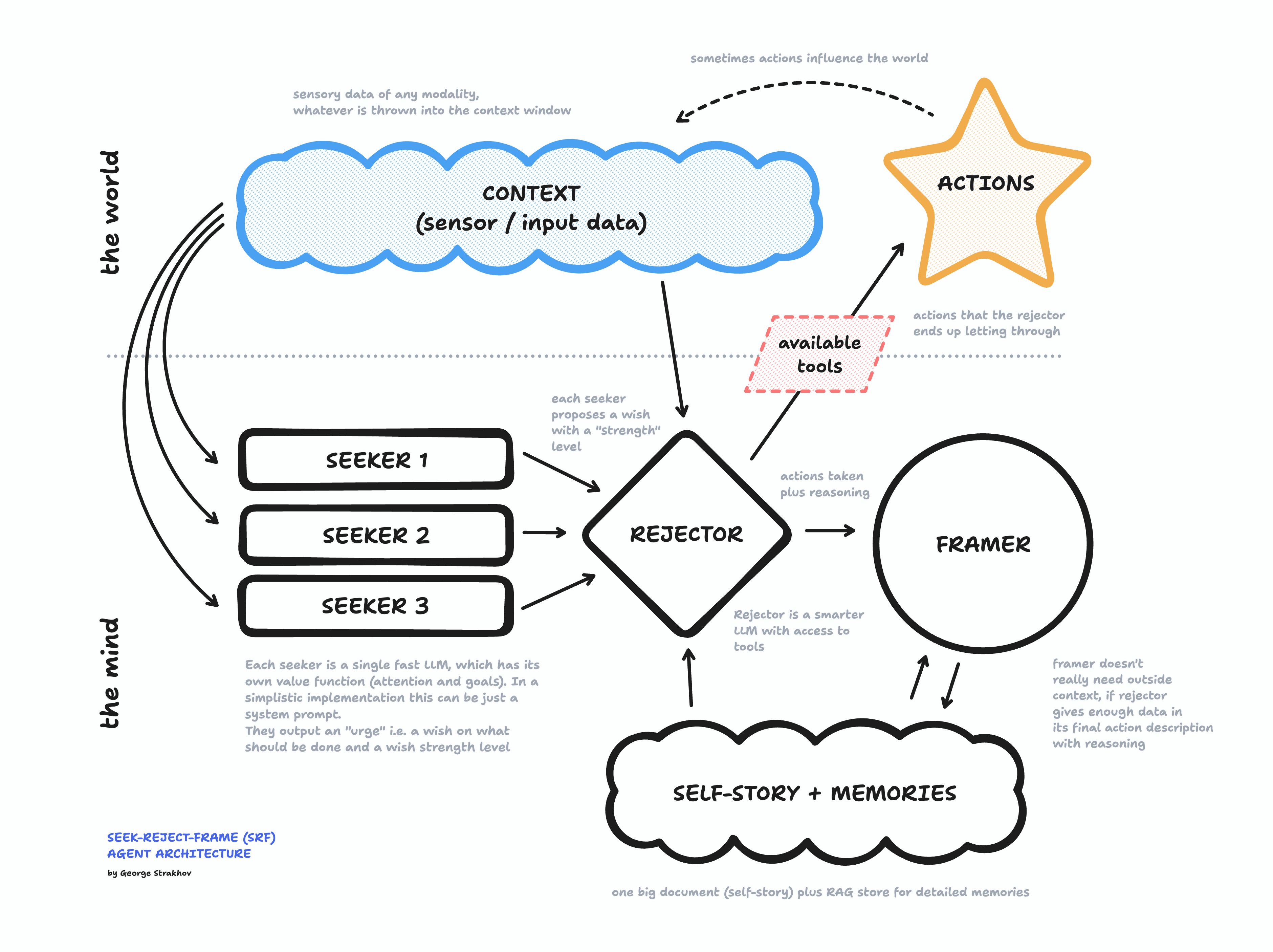This essay is telescopic. It can shrink or expand, depending on how much attention you are willing to give.
This is an AI-generated, human-reviewed version (201 words).
Show other sizes.
Seek-Reject-Frame
-
Current AI agent architectures follow rigid patterns like assembly lines, hierarchies, or democratic consensus, mimicking human organizational structures
-
I'd like to propose a new approach called Seek-Reject-Frame (SRF) that reimagines AI agents as parts of a mind rather than workers in an organization

-
SEEKER: Simple agents with basic drives and immediate desires. The goals of the overall agent are not coming from the top, but from the bottom - from the simple SEEKERs.
-
REJECTOR: Higher-level agent that filters and suppresses most impulses from SEEKERs based on safety, future satisfaction, and coherent self-narrative
-
FRAMER: Post-rationalizes actions and maintains coherent self-story and stored memories, critical for future decision-making by the REJECTOR.
-
The SRF system runs in continuous loops: SEEKERs generate wishes, REJECTOR evaluates and filters them and turns some of them into actions, FRAMER maintains narrative consistency and memory.
-
SRF systems can be called "Freudian" agents, because they are driven by unconscious desires and repressed impulses.
-
The hypothesis is that complex, fuzzy environments with imperfect information, Freudian agents will show more resilience, more creativity and more consciousness than simple multi-agent systems of the present that put basic ReACT-style agents into a hierarchy.
Original published: February 17, 2025